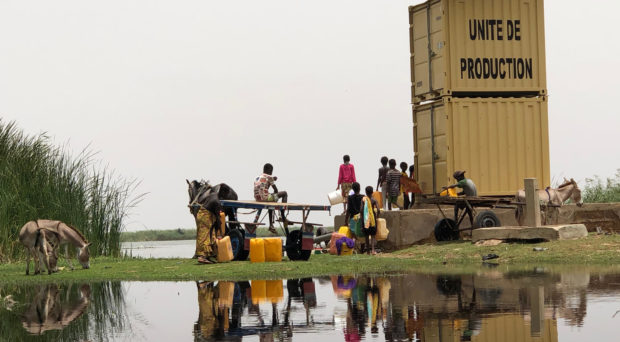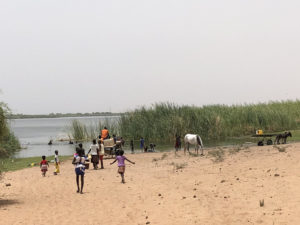
Oftentimes in this blog we discuss biological studies that examine parasites. But equally, or perhaps even more important in certain settings, are human behaviours that drive changes in exposure to these parasites.
There is a wealth of disciplines and subdisciplines that utilise anthropological and sociological methods to try and address behavioural and cultural drivers of disease. These studies can be particularly useful when diseases persist in spite of control efforts.
There are several posts highlighting the unique biology of schistosomes and the complex life cycles that drive some of the patterns of disease. Today, we will be highlighting a recent paper that aimed to explore how humans respond to the disease and alter their own behaviours in a hyperendemic schistosomiasis setting.
The study conducted by Lund and colleagues took place within a larger schistosomiasis study on socioeconomic drivers of schistosomiasis across 16 villages in Senegal. Many parts of Senegal are now considered hyperendemic for schistosomiasis and both urinary and intestinal forms of the disease are found in high prevalence in children and adults. This study focused on four villages, 1 along a river and 3 alongside a lake. The construction of the Diama Dam in the late 1980s, although good for agricultural production, also had the unintended consequence of increasing habitat for schistosome intermediate hosts and led to an increase in the disease in many parts.
Focus group discussions to identify knowledge, attitudes and practices related to schistosomiasis
Focus group discussions usually have a small number of participants (here 4-9 people) of peer groups (here adult men, adult women, or youths-ages 10-18 years). The aim of focus groups is to have guided but open ended discussions on key topics of interest. They have been used to identify a range of perspectives on uptake of health interventions, preventative behaviours, treatment compliance, and more. In this study, researchers used focus groups to understand where and why local people contact water and how people understand schistosomiasis disease risk in these places.

Discussions were recorded, translated, and then ‘coded’ to identify themes that come up within discussions. These themes are not pre-determined, rather they ‘emerge’ from the transcripts of discussion. The unguided discussion and analysis bolster the value of these focus group discussions to identify important points within each peer group. Overall, the research team conducted three focus groups for each peer group (men, women, and youths) in each of the four villages. Overall, 74 individuals participated across all the villages and these individuals represented a range of occupations and experiences in the hyperendemic region.
Some community members identified an increased risk for disease at midday. The larval schistosomes in fact emerge from snails at the hottest part of the day, so their awareness aligns with scientific data on schistosome biology.
Throughout over 15 hours of discussions across the villages, the researchers identified some key points relating to schistosomiasis exposure and prevention. The most prominent finding is that many community members, including children, have significant knowledge of schistosomiasis risk. Locals recognise that disease is spread through water and common activities that require water contact lead to infection.
In addition to a general knowledge of how schistosomiasis infection is acquired, some community members also identified an increased risk for disease at midday. The larval schistosomes emerge from snails at the hottest part of the day and are more infectious in the hours after they emerge. Identifying midday as the time of day when risk is highest aligns with scientific data on schistosome biology.

Following a high level of knowledge of schistosomiasis risk in each community, many participants described ways in which they try and limit exposure to the disease. Some individuals avoid contacting water at midday, instead bathing in the morning or evening or avoiding the lake altogether. However, water contact can be inevitable, despite people trying to reduce it to a minimum. Many participants lack alternative safe water sources, and even in the cases of piped water, these options could be prohibitive through their expense or time-investment required. Water is required for bathing, household chores, and occupational tasks (i.e. fishing, irrigation). So, despite the knowledge of schistosomiasis and behaviours to reduce risk, contact with unsafe water is a necessity for many.
These focus groups highlighted awareness and knowledge of schistosomiasis risk in these communities. Education is often championed as an important complement to MDA, but this study hints that education in isolation is insufficient. Individuals here lack suitable alternatives – both for places in which to go to the toilet and for access to safe water.
Where to now?
Although individuals and communities in this study had knowledge of schistosomiasis risk and developed behaviours to lower this, their livelihoods prevented complete prevention. However, the focus group discussions showed that participants were motivated to reduce schistosomiasis risk. Environmental interventions – such as snail control and WASH provisions could be used to add significant control value to ongoing MDA campaigns in the area.
This study also highlights the importance of qualitative research and local perspectives in understanding disease dynamics and the limitations of control interventions. Although this study was conducted in only four villages, the methods can be extended to other areas that also show low success of MDA interventions to identify barriers and opportunities for control.

Comments